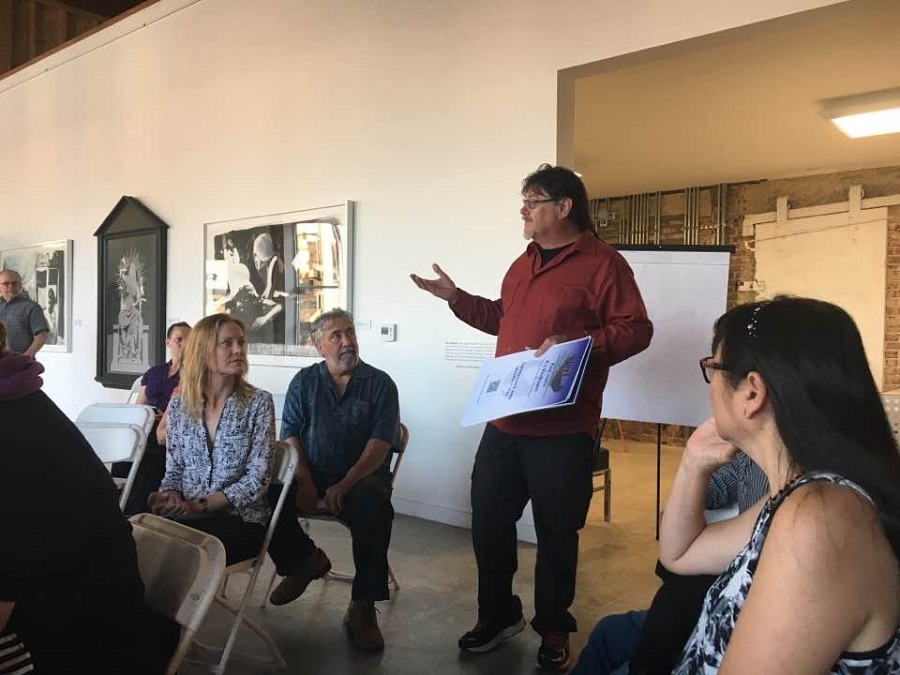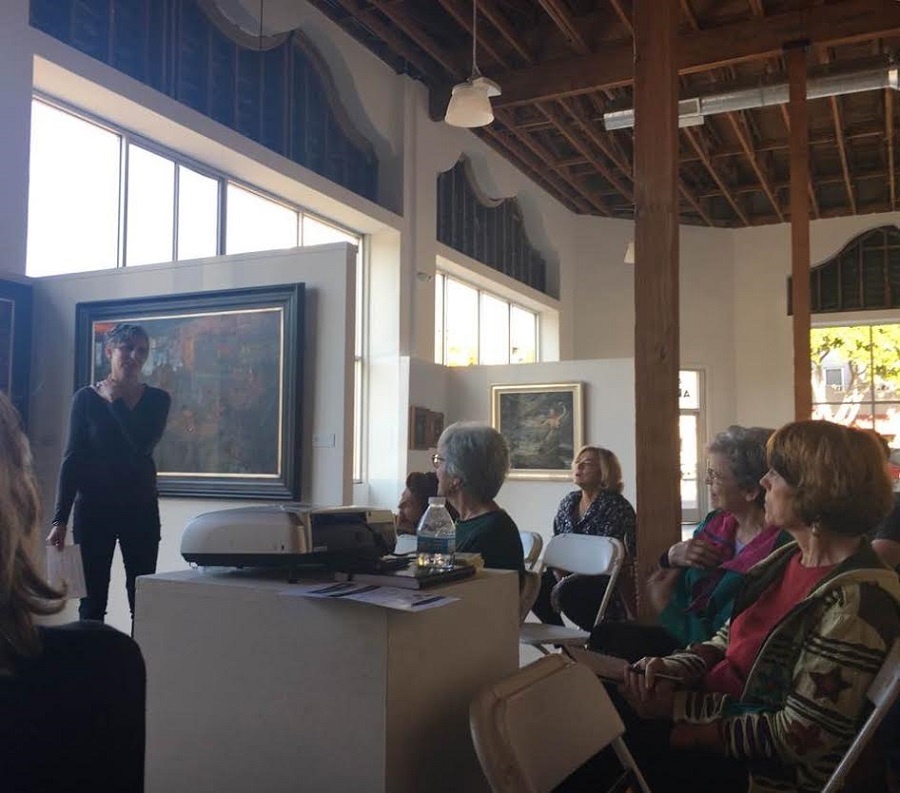
CSULB professor and local artist Craig Stone shares his experience in creating public art. Photos by Ariana Gastelum.
Members of the Long Beach art community discussed ways to improve the presence of the city’s public art during a public meeting last Thursday, hosted by the Arts Council for Long Beach at Art Exchange.
Topics included ways to maintain public art after it’s created, providing an online archive, educating the public on the arts’ diverse backgrounds and implementing more artistic opportunities into city projects.
The evening began with three presentations by local renowned artists, who shared their unique experiences in the process of creating public art.
The presentations were given by Terry Braunstein, who has commissioned several public pieces including the “Navysphere” and the Metro Blue Line station at Anaheim Street; Susan Logoreci, who was commissioned by Metro to create eight large drawings that were recreated into mosaic tile; and Craig Stone, locally known for “Shadows Casting on the Shore,” in Belmont Shore.
Arts Council Executive Director Griselda Suarez then opened the floor for the audience to discuss ways to improve the presence of public art in Long Beach.
Arts Council Education and Community Programs Manager Cynthia Luján informed the audience that the city currently has a mural conservancy program through Long Beach Parks, Recreation and Marine for city-owned public art. Metro and Long Beach Transit have their own restoration services as well.
Sue Abir, who attended the meeting, has been leading art walks around the Village Arts District for three years for her own enjoyment. When she first started these tours, she noted having difficulty finding background information about the city’s public art.

Susan Logoreci, talks about her Metro-commissioned artwork featuring eight large drawings recreated into mosaic tile in Los Angeles.
“I found several books in the public library of just basic pictures of what was in town, but not a lot,” Abir told the audience. “It was a lot of picking things up as I found them on the Web and trying to add to it as people would come on the walks and tell me stories about what I saw.”
The Arts Council is currently working on launching an archive to feature city and Arts Council commissioned projects, provided with background information such as title, artist, year, material and location, Luján announced.
“I’m honestly looking forward to what’s coming out in the cataloguing because, for me, it’s really just this extra abundant enrichment to what is a vision of our city to talk about the murals, people who put them up and all of the pieces and sculptures that we have,” Abir said. “They are really abundant here, and I am so delighted to have so much beautiful art to share with people.”
Members of the audience also suggested that there should be a position in city planning that finds artistic opportunities for every project, so public art is part of the plan and not just an addition. Suarez noted in the meeting that Mayor Robert Garcia has acknowledged this idea for future developments.
“I think between the arts community, the Arts Council, the architects, the designers, we’re starting to slowly inch our way into the space to say that this is going on, and this is how we should do it,” Suarez said. “This is how we can create the city that we all want.”

